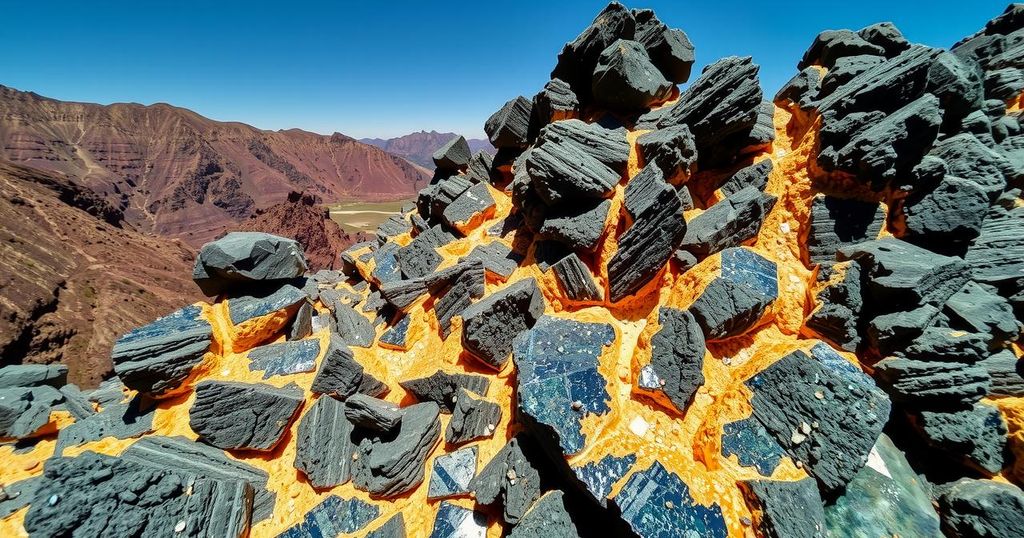Astra Exploration Intersects 199.3g/t Gold and 228g/t Silver at La Manchuria

Astra Exploration Inc. reported high-grade gold and silver results from its La Manchuria Project, with notable intersections including 199.3 g/t gold and 228 g/t silver at LM-107A. The company is fully funded for Phase II drilling to explore further potential mineralization, with encouraging results from their initial drill program. CEO Brian Miller emphasized the findings demonstrate a larger vein system than previously recognized, driving plans for further exploration.
Astra Exploration Inc. made a significant announcement regarding its La Manchuria Project in Argentina, with highlights from their recent drilling program showing promising results. Notably, drill hole LM-107A reported an impressive 199.3 grams per tonne (g/t) of gold over 0.6 meters, along with 228 g/t of silver. Other notable intersections were found in LM-112 and LM-113, adding to the growing evidence of high-grade mineralization in the area. The company is fully funded for further drilling phases as it continues to explore the promising geology of the region.
Located in the Deseado Massif, Astra’s La Manchuria Project has been the focal point of exploration activities. CEO Brian Miller expressed optimism about the findings, highlighting that the drilling program has unveiled a much larger vein system than previously thought. The drill results have not only corroborated the existing geological model but also indicated that mineralization extends deeper and across multiple directions. The discovery of high-grade intervals like 199.3g/t gold represents a noteworthy achievement for Astra, further enticing investors and stakeholders alike.
The Phase I drill program included 11 diamond drill holes, reaching a total of 2,468 meters. The results discussed come primarily from seven of these holes, specifically exploring southeastern and northwestern extensions of the Main Zone, as well as the Eastern Zone. Results from LMD-107A were particularly significant as they intersected high-grade veins, challenging previous assumptions about the area’s mineral potential and offering exciting possibilities for further exploration.
The drilling in the southeast aimed to investigate areas that previously had scant findings. Evidently, the Astra geological team correctly predicted that deeper drilling was necessary to encounter the main vein system. Further, drilling holes such as LMD-110 and LMD-111 provided supportive data, although they yielded less significant mineralization, underscoring the need for a comprehensive follow-up strategy in this area. Meanwhile, the northwest findings from drill hole LMD-113 opened the door for exciting new mineralized structures that remain open for further exploration.
In the Eastern Zone, LMD-112 also showed promising results with 4.0 meters grading 7.6 g/t of gold and 0.5 g/t of silver. However, hole LMD-114 did not return significant assay results, indicating that the area still requires more exploration. The Eastern Zone holds potential, as four out of five holes drilled have shown intervals above 5g/t Au equivalent, suggesting that more drilling will be necessary to fully understand the scope of mineralization there.
Looking forward, Astra Exploration intends to advance with a Phase II drilling program. With around $2 million in the current treasury, the company is well-positioned to continue its commitment to exploring and expanding the La Manchuria epithermal vein system. The solid funding and the success of the initial drilling program provide a strong base for future exploration efforts, which could lead to additional significant findings.
In terms of methodology, Astra employs robust sampling and assay protocols to ensure accuracy and reliability of the results. Drill samples are treated carefully by splitting, tagging, and sending them to a certified laboratory for analysis. This process reflects Astra’s commitment to maintaining quality standards in their exploration endeavors as they progress in an increasingly promising venture.
Astra Exploration Inc., based in Vancouver, BC, is geared towards building a strong portfolio of precious metals projects in key Latin American mining jurisdictions. The La Manchuria Project is particularly notable, exhibiting potential akin to some of the world’s leading epithermal deposits. As the exploration continues to unfold, the mining community eagerly anticipates Astra’s advancements and the implications for precious metals mining in the region.
Astra Exploration’s drilling program at La Manchuria has revealed exciting high-grade intersections that could lead to significant mineral discoveries. With impressive results from LM-107A and ongoing exploration plans, the company is well-positioned for future growth. Funding for the next drilling phase is secured, allowing Astra to delve deeper into the potential of the La Manchuria Project, which is part of a highly promising geological setting. The findings showcase not only the achievements of the team but also pave the way for developing a comprehensive understanding of the mineralization in the area.
Original Source: www.juniorminingnetwork.com








